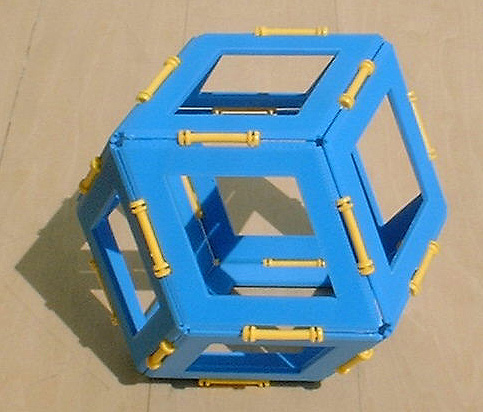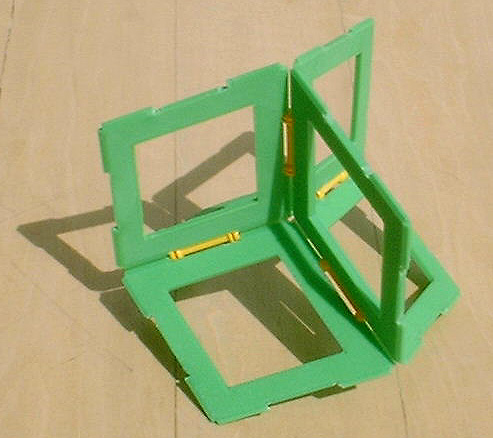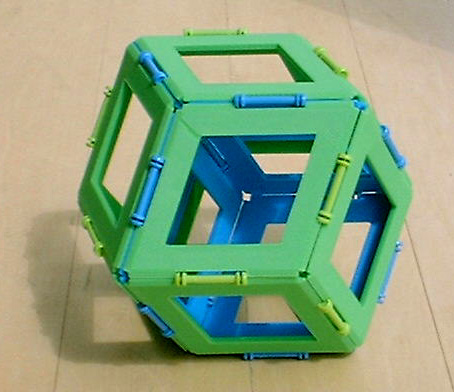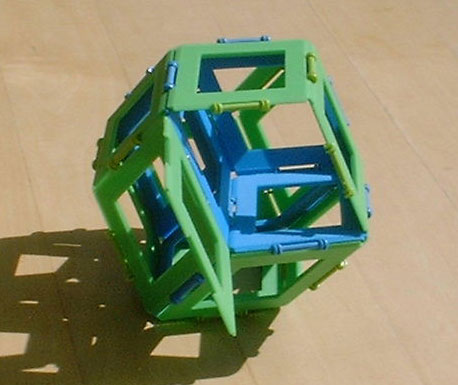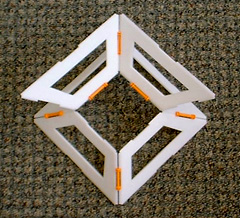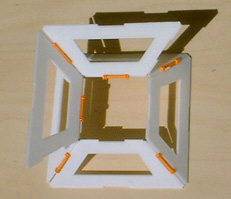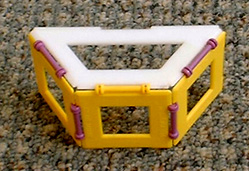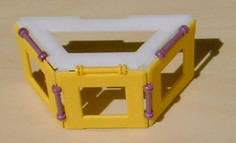CS 285: SOLID MODELING, Spring 2002
Assignment #7 : Snap-together Tiles
We want to create designs and prototypes of snap-together edges on modular tiles in the shape
of flat polygons with "unit length" edges.
Such tiles should not only be able to form 2-manifold polyhedral surfaces,
but they should also form models such as the
hypercube
or the
zonohedron
in which more than two faces (say, up to six) come together in one edge.
The plan is to build a few copies of such tiles to demonstrate the concept.
The focus is on the design of the edge "mechanism"
that will allow several such tiles to hold together
at a wide range of enclosed angles -- and also come apart without breaking the tile.
Of course this means that all parts must have the same edge length --
let's standardize on a lenght of 2 inches.
Phase One -- Conceptual Tile Design
DUE: Wednesday 2/27, 2002, 9:10am at beginning of class
Form competing "toy companies" with the following pairing:
- Ali Lakhia and Jeff Schoner and Sean Kim
- Youngung Shon and Bryan Liu
- Kiha Lee and Larry Miller
Think about different approaches that will lead to a promising tile.
Make sketches (by hand or by computer) of the proposed form
and turn them into a couple of overhead foils or on-line displays.
Annotate these drawings with some remarks about how such tiles
are supposed to snap together and come apart again.
The goal is to make the concept as clear as possible to people
who are unfamiliar with it.
Bring this design proposal to class on Wednesday,
where you (as a pair) will make an informal 5-minute presentation
to the rest of the class and try to convince them (and me) that your concept works.
We will then discuss the feasibility of the various design ideas
and define the scope for the execution of a final, detailed design
suitable for prototyping on the FDM machine, and perhaps even a small
"production run" on our injection molding machine.
The general context of your design should indeed be the goal to make a (cheap)
injection-molded part that could be made by the millions.
Phase Two -- Detailed Design
DUE: Tuesday, March 5, 2002, 6pm -- by email
Finalize your designs for FDM prototyping.
Make the CAD model for the specific tiles assigned to your "company"
using the "polymorf" system.
- 4D hypercube (12 trapezoids to inner cube in big cube).
- 4D simplex (6 triangles to center in tetrahedron).
Also: 12 triangles coming together in center of a cube.
- 4D zonohedron (12 rhombic outer faces and 6 inner faces -- 70deg+32sec).
6D zonohedron (30 rhombic outer faces and 45? inner faces -- 63deg+26sec).
Mail me the design documentation (after you have tested your CAD model with QuickSlice):
A picture, a SLIDE file, and a short paragraph describing special issues that came up in the design process.
Phase Three -- Implementation
DUE: Monday, March 11, 2002, 9:10am at beginning of class
Make four prototype tiles for demonstration and verification purposes.
Then make the whole non-manifold object.
The First Solution: The 4D Simplex

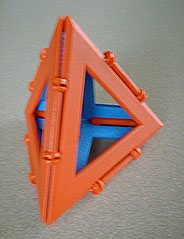
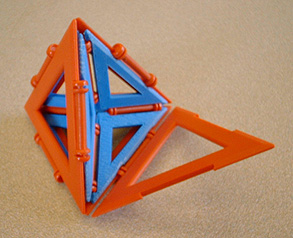
The Rhombic Tiles for the 4D Zonohedron
The First Couple of Tries for a Trapezoidal Tile
And here is a completed Hypercube in cell-first projection
using a corrected version of the trapezoidal tile and a larger square tile:
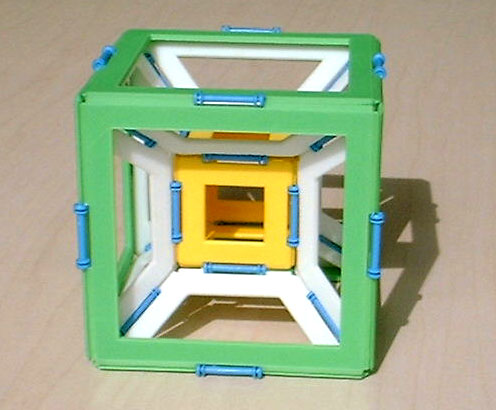
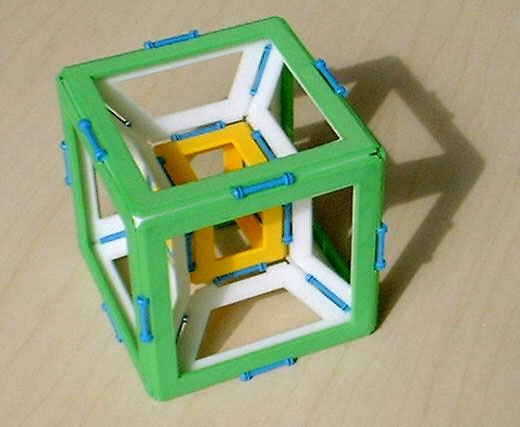
Kiha Lee's Final Project
The Final Step for the Triacontrahedron Tile: An Injection Mold
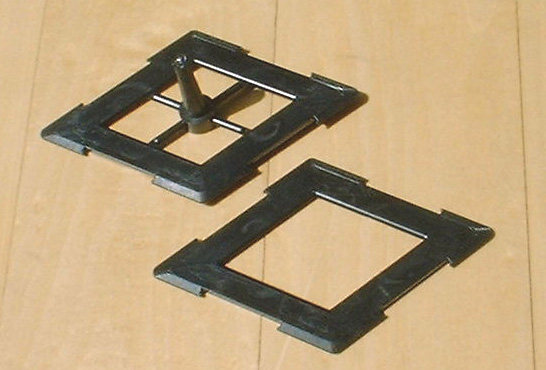
Raw and clean ABS tiles.
| 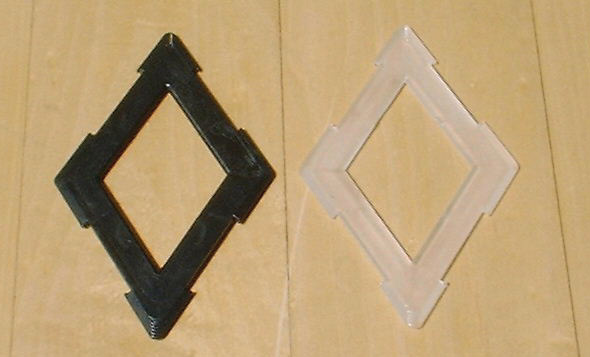
ABS and Polypropylene tiles.
| 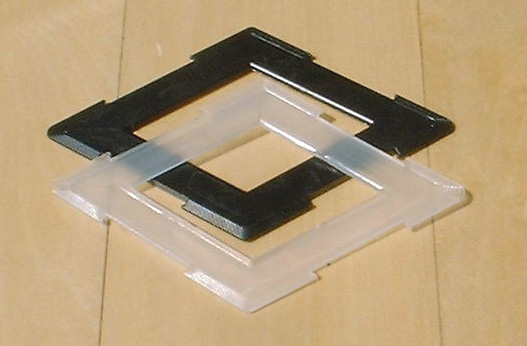
ABS and Polypropylene tiles.
|
Some Assemblies Made with this Tile
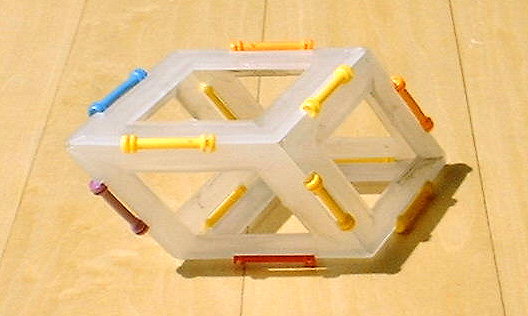
3D Zonohedron
| 
4D Zonohedron
| 
Extrusion to 5D
|

Start of extrusion to 6D ...
| 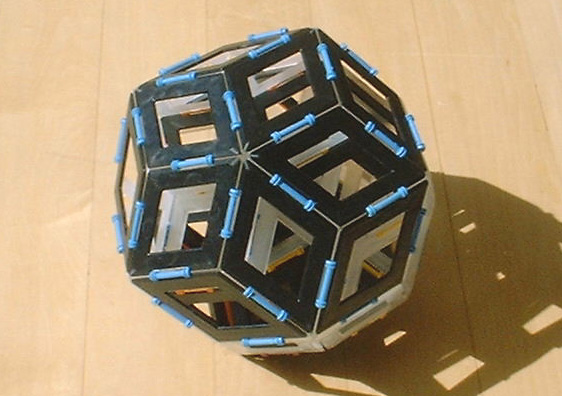
The 6D Zonohedron.
| 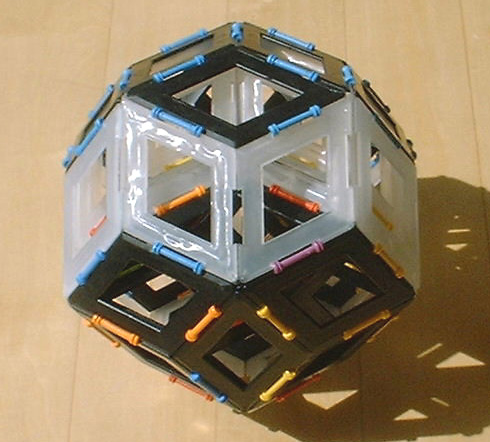
Another view.
|
PREVIOUS < - -
- - > CS 285 HOME < - -
- - > CURRENT LECTURE < - -
- - > NEXT
Page Editor:
Carlo H. Séquin
